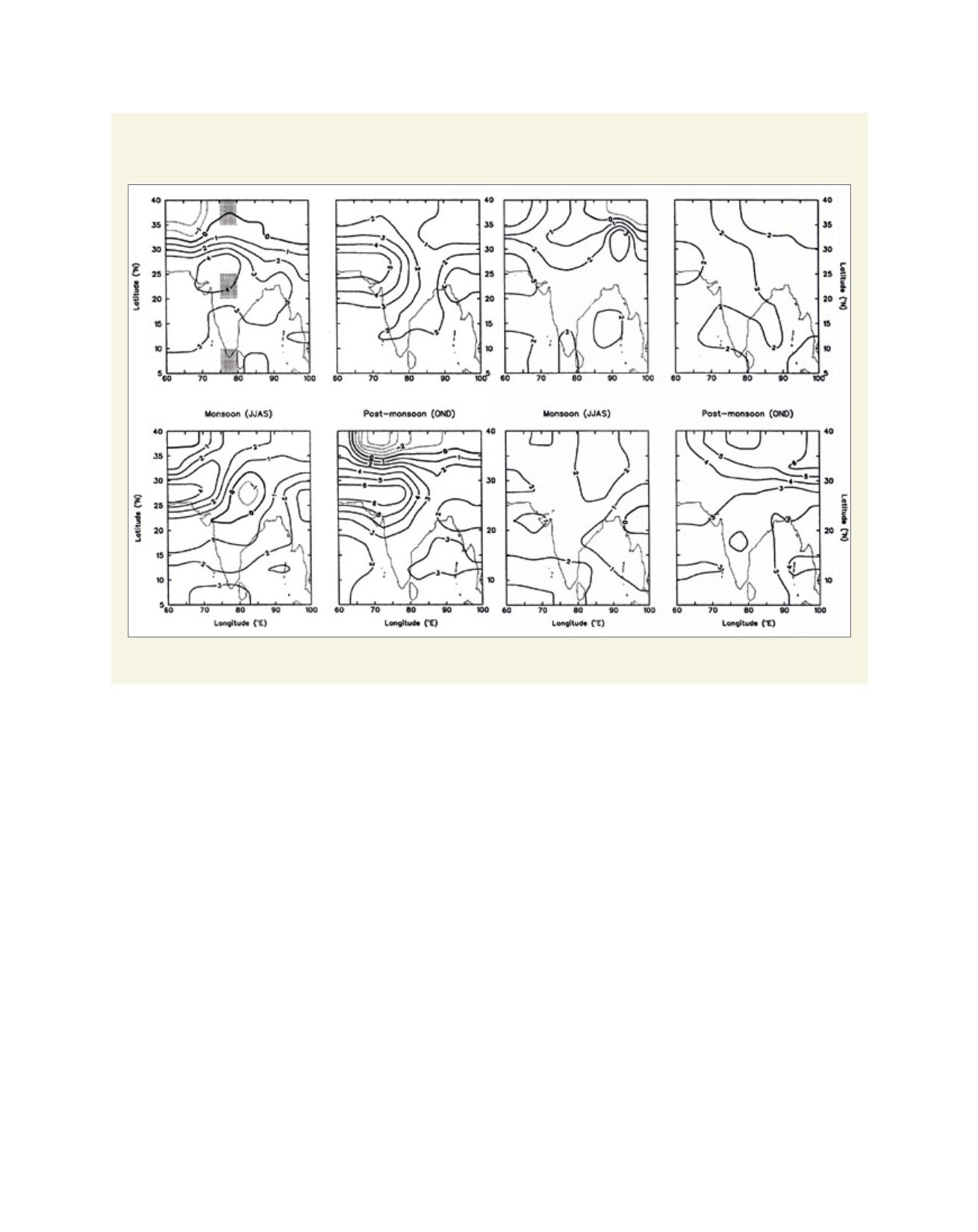

[
] 86
difficult to project, anticipated climate change combined
with other drivers of change is likely to intensify current
agricultural water management challenges in India. Higher
temperatures and more frequent droughts are expected to
reduce water availability, hydropower potential and crop
productivity in general. The effects of population growth
and increasing water demand, which are often, but not
always, coupled, are likely to be a more significant source of
water stress than climate change when considering changes
to mean precipitation and run-off. Increasing temperatures
in all regions are expected to intensify evaporative demand,
which would tend to increase the amount of water required
to achieve a given level of plant production if crop phenol-
ogy and management are to be held constant. However, if
cultivars and planting dates were to remain unchanged,
accelerated crop development in response to temperature
increases would tend to have the opposite effect on water
requirements. Rising temperatures are also expected to
increase evaporative losses of surface water resources.
Future changes in potential evapotranspiration (PE)
over India and adjoining countries project an increase in
all the global climate models. In the monsoon season the
maximum increase in PE is over north-western India. The
interrelationship between PE and rainfall was assessed by
mapping the number of global climate model (GCM) exper-
iments which yield increased P/PE ratio for the monsoon
season. A number of GCMs agree that the P/PE ratio
becomes more favourable over north-eastern India and
that changes in this ratio are less favourable in the post-
monsoon season and in the extreme south in the country.
3
Presently, the India Meteorological Department has taken
up an extensive modernization programme to enhance
weather services in the country and for combating deser-
tification through the induction of advanced technology
for observational systems (including automatic weather
stations, Doppler weather radars, advanced satellites and
upper air observations network), installation of a central-
ized information processing system and its link with the
national meteorological centres. The outcomes of these
modernization programmes are district-level forecast
services, nowcasting of severe weather events, extended
range (10-20 days or a month) forecasting, increased
accuracy of short, medium and long-range forecasts, multi-
hazard early warning, real-time data availability, improved
spatial and temporal coverage and better service delivery.
Thus, it is advisable to focus on prevention of desertifi-
cation in dry farming tracts of India along with the other
regions. The following adaptation strategies are being
Calculated change (per cent) in mean seasonal PE for for 10C of global warming: (left) the Canadian Climate Centre
experiment and (right) the Geophysical Fluid Dynamics Laboratory experiment
Source: Chattopadhyay & Hulme, 1997
L
iving
L
and
















